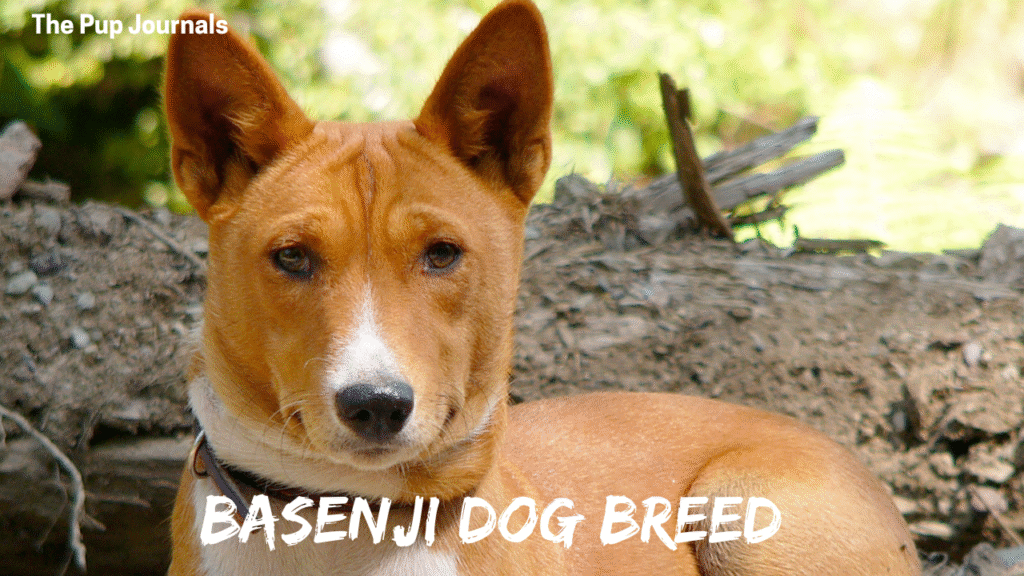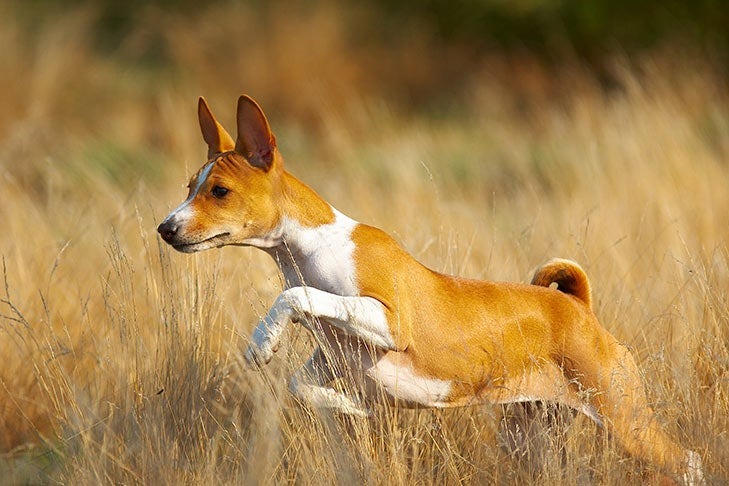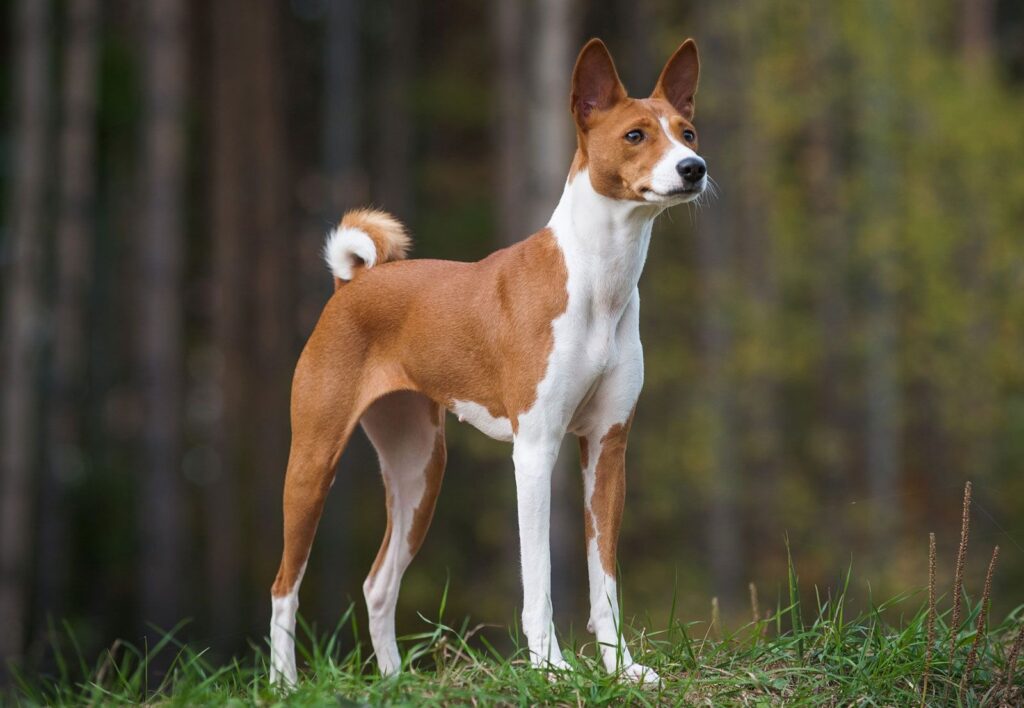
Table of contents
- History and Origins of the Basenji
- Appearance and Coat of the Basenji
- Temperament and Personality
- Training and Socialization Tips
- Exercise Needs for a Basenji
- Nutrition and Diet for Basenjis
- Grooming and Coat Care
- Health and Lifespan of the Basenji
- Living with a Basenji
- Finding and Adopting a Basenji
- Conclusion
The Basenji dog breed fascinates with its alert eyes and curled tail. This guide helps you care for a Basenji with simple steps. You will learn Basenji history, traits, and living essentials. Each tip uses easy language and active voice for quick reading. Follow this guide to build trust and joy with your Basenji.
History and Origins of the Basenji
The Basenji dog breed traces back over 5,000 years in Africa. Ancient Egyptians kept Basenjis as prized hunting companions and pets. They called them the “barkless dog” for their unique vocal style. Hunters in Congo used Basenjis to flush small game and warn packs. European explorers discovered Basenjis in the late 1800s by chance. They brought the Basenji breed to Europe for show and study. The American Kennel Club first recognized Basenjis in 1943. Today, breed enthusiasts admire the Basenji’s blend of grace and grit.
Appearance and Coat of the Basenji
Basenji present a small, square build and a proud stance. They stand 16 to 17 inches tall at the shoulder. Adult male Basenjis weigh between 22 and 24 pounds. Female Basenjis range from 20 to 23 pounds in weight. Their coat lies close to the body and feels silky. Basenji coat colors include red, black, tricolor, and brindle. Each dog shows white markings on feet, chest, and tail tip. Their curled tail sits high and loops neatly over the back. Basenji ears stand erect and tilt forward with curiosity. The face features dark almond eyes that reveal keen alertness.

Temperament and Personality
The Basenji dog breed shows intelligence, independence, and loyalty. They form strong bonds with family members and close friends. Basenjis greet strangers with polite caution and quiet confidence. They rarely bark but may yodel or make unique “baroo” sounds. This breed craves mental challenges and daily interactive play. Basenjis exhibit hunting instincts like stalking and chasing small animals. They thrive on clear boundaries, consistent rules, and regular routines. Basenjis can show stubborn streaks and need patient training. They enjoy safe off-leash play in fenced or enclosed areas. The Basenji’s blend of elegance and spirit wins many hearts.
Training and Socialization Tips
Training a Basenji dog requires consistency and positive reinforcement. Start training as soon as your Basenji puppy arrives home. Use treats, praise, and toys to reward desired behaviors immediately. Keep sessions short—five to ten minutes—to match their attention span. Teach basic commands like sit, stay, come, and down first. Gradually add advanced tricks to engage their sharp minds daily. Early socialization prevents shyness or unwanted aggression around strangers. Expose your Basenji to people, pets, and new environments gently. Enroll in puppy classes for structured group training and fun play. Patience and praise help shape a confident and obedient Basenji.
Exercise Needs for a Basenji
Basenji dogs need daily exercise to stay fit and healthy. Aim for at least 45 minutes of brisk walking every day. Add play sessions like fetch or tug-of-war in a safe yard. Hiking on easy trails offers mental stimulation from new scents. Puzzle toys provide indoor activity when weather keeps them inside. Avoid long runs in hot weather to protect their health. Use secure fencing or long lines to prevent off-leash escapes. Rotate activities weekly to keep your Basenji engaged and happy. Supervise off-leash play to reduce risk of chasing wildlife. Regular exercise helps make your Basenji calm and content.

Nutrition and Diet for Basenjis
Feed your Basenji high-quality dry kibble or fresh food mix. Choose formulas rich in protein and moderate in healthy fats. Divide daily food into two balanced meals for stable energy. Monitor portion sizes to prevent obesity and joint stress. Offer fresh water at all times, especially after exercise sessions. Consult your veterinarian for breed-specific dietary recommendations. Avoid table scraps that can cause weight gain or digestive issues. Use slow-feed bowls or puzzles to reduce fast gulping of food. Supplement with fish oil for skin, coat, and joint support. Track your Basenji’s weight and adjust diet as life stages change.
Grooming and Coat Care
Basenji coats stay clean with minimal grooming needed each week. Brush your Basenji weekly with a soft bristle brush or mitt. This routine removes dead hair and distributes natural skin oils. Bathe only when the dog becomes dirty or shows odor. Use a gentle dog shampoo to avoid skin dryness or irritation. Check paws regularly for cuts, debris, or signs of discomfort. Trim nails every three to four weeks for safe, comfortable walks. Clean ears with a cotton ball to prevent wax buildup and infections. Wipe facial wrinkles gently to keep skin healthy and dry. Regular grooming sessions strengthen your Basenji bond and trust.
Health and Lifespan of the Basenji

Basenji dogs generally enjoy strong health with a lifespan of 12 to 16 years. They face few breed-specific issues compared to other breeds. Fanconi syndrome can appear in some bloodlines, so test early. Hip dysplasia may affect active Basenjis—use X-rays to screen breeding dogs. Hypothyroidism can cause weight gain—monitor weight and energy levels. Progressive retinal atrophy can lead to vision loss; schedule yearly exams. Skin allergies sometimes occur; adjust diet or environment as needed. Regular veterinary checkups catch health issues before they worsen. Maintain parasite prevention for ticks, fleas, and internal worms year-round. Healthy Basenjis reward owners with years of loyal companionship.
Living with a Basenji
Basenjis adapt to both apartments and houses with proper care. Provide a secure, fenced yard for safe off-leash play daily. Establish clear boundaries and rules to prevent unwanted behaviors. Offer a cozy crate or bed as your Basenji’s personal retreat. Keep home temperature moderate and provide shade outdoors. Leave interactive toys during alone time to reduce boredom. Supervise youngsters and small pets around a hunting-strong Basenji. Use baby gates to block off unsafe areas or stairs. Daily routines help your Basenji feel secure and confident. A loving, structured environment helps your Basenji thrive.
Finding and Adopting a Basenji
Choose a reputable Basenji breeder who offers health clearances. Ask for tests on Fanconi syndrome, hip dysplasia, and eye exams. Visit the breeder’s facility to observe puppy conditions and social skills. Meet the puppy’s parents to gauge temperament and health traits. Request vaccination and deworming records before bringing your Basenji home. Consider adopting from Basenji rescue organizations for adult dogs. Rescues often provide valuable behavior assessments and medical history. Prepare your home with crates, bedding, toys, and bowls ahead of time. Schedule a veterinary visit within the first week after adoption. Join Basenji clubs or online forums for ongoing breed support.
Conclusion
The Basenji dog breed blends elegance, intelligence, and loyalty uniquely. This guide covered Basenji history, traits, care, and training tips. Use consistent routines, positive training, and regular exercise for success. Maintain grooming, health checks, and balanced nutrition every day. Your Basenji will reward you with playful energy and devoted friendship. Start your Basenji journey with confidence and enjoy every moment together.
Reference: Wiki
Read More: Newfoundland Dog Breed Guide

